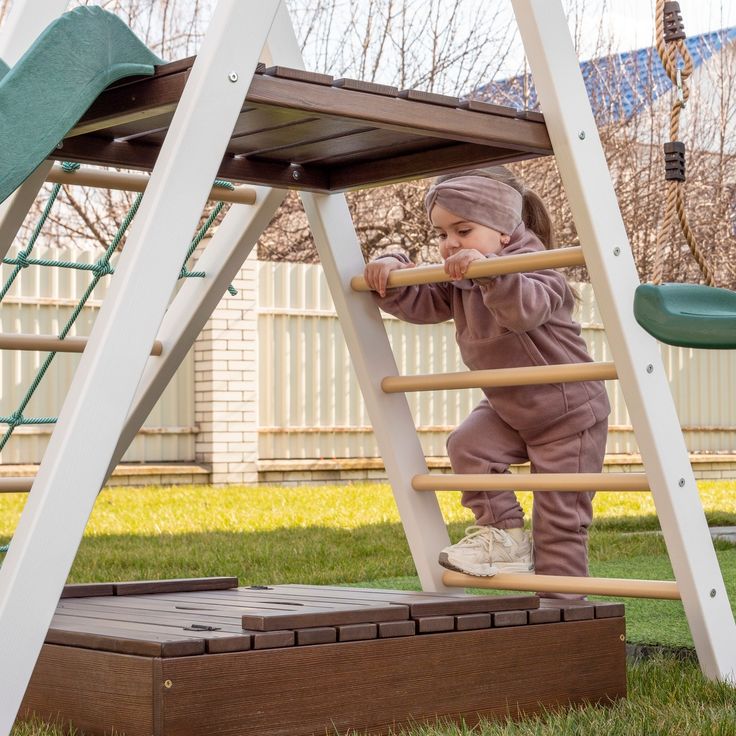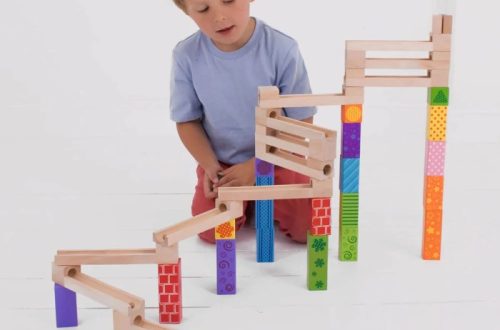Importance of Outdoor Play in Montessori Education
Outdoor play is an essential part of child development. In Montessori education, montessori outdoor toys serve as an extension of indoor learning. Children gain hands-on experiences and connect with nature. This fosters growth, creativity, and independence.
Benefits of Outdoor Activities for Child Development
Outdoor activities offer various developmental benefits. Physical health improves through active play like running, jumping, and climbing. Fine and gross motor skills also develop naturally. Spending time outside enhances cognitive abilities such as problem-solving and observation skills.
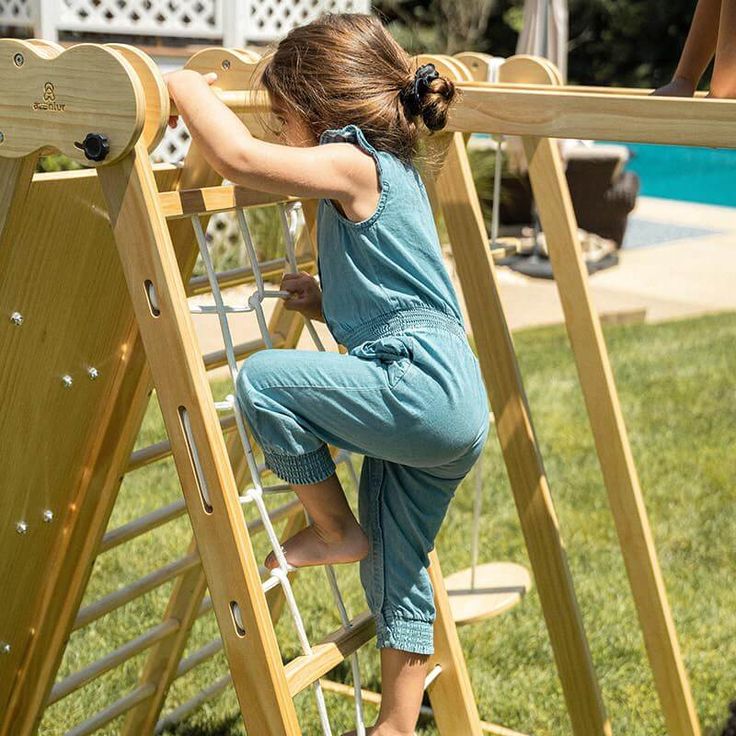
Social skills grow when children play together, building teamwork and communication. Emotional well-being improves as children explore and become more confident. Time outdoors reduces stress and improves focus in children.
How Montessori Principles Support Outdoor Learning
Montessori principles align well with outdoor exploration. Nature provides opportunities for learning through curiosity and discovery. The Montessori approach encourages independence, which thrives in outdoor settings. Children learn to care for plants, explore animals, and respect the environment.
Sensory experiences are a key focus in Montessori practice. Nature stimulates touch, smell, sight, and hearing. Additionally, outdoor activities promote responsibility as children care for their surroundings. This aligns with Montessori’s emphasis on fostering respect for the world.
Features of Montessori-Approved Outdoor Toys
Montessori-approved outdoor toys prioritize meaningful play experiences and foster holistic development. These toys adhere to Montessori principles by encouraging hands-on learning, creativity, and independence. They often emphasize sustainability and alignment with the natural environment, enhancing children’s connection with the world around them.
Focus on Natural Materials and Sustainability
Montessori outdoor toys are typically made from natural materials such as wood, cotton, or metal. These materials are durable, eco-friendly, and safe for children to explore. The tactile nature of natural materials improves sensory engagement, sharpening touch and observation skills.
Sustainability is a cornerstone in choosing these toys. Montessori principles advocate respect for the environment. Toys crafted from renewable resources or those that are biodegradable align deeply with this value. Additionally, these toys often minimize the use of plastic and harsh chemicals, ensuring safety and promoting environmental care.
Natural materials also provide aesthetic appeal, fostering an appreciation for simplicity and beauty. Wooden blocks, gardening tools, and fabric sandbags are just a few examples of toys that demonstrate sustainability while supporting development.
Encouraging Creativity and Problem-Solving
Montessori toys are designed to inspire creativity and instill problem-solving skills. Open-ended toys, such as building blocks or rope sets, let children invent their own games and scenarios. These activities stimulate imagination and critical thinking.
Problem-solving is woven into the design of many Montessori outdoor toys. Items like balance beams, climbing structures, or puzzles require strategic thinking and perseverance. They challenge children to experiment while learning from mistakes.
Outdoor toys often introduce practical life skills. Gardening sets, for instance, teach kids patience and responsibility as they care for plants. Water play toys encourage experimenting with volume and flow, integrating STEM concepts naturally into fun activities.
By creating opportunities for creativity and problem-solving, these toys support cognitive and emotional development. Children not only play but also learn valuable life skills in an engaging, supportive environment.
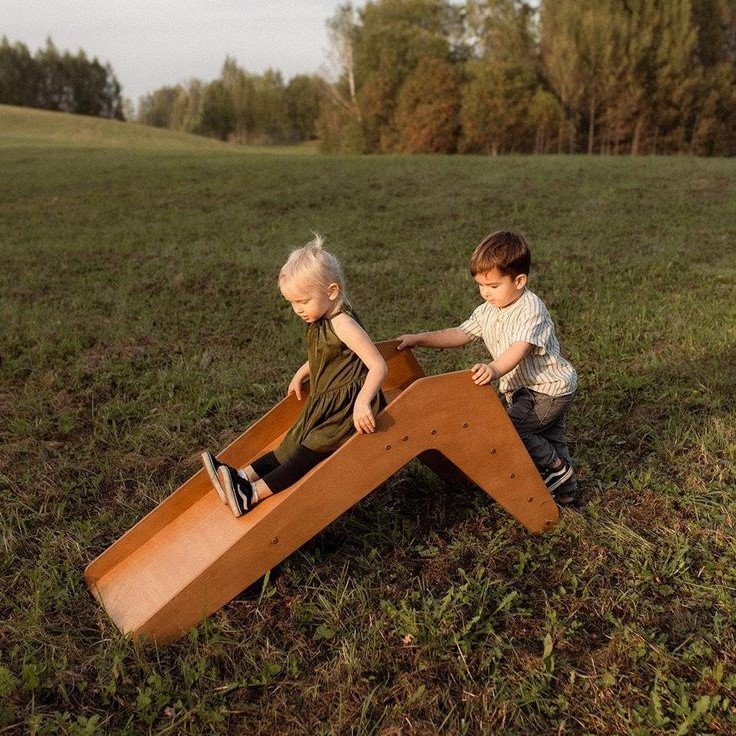
Types of Montessori Outdoor Toys for Different Ages
Montessori outdoor toys are tailored to support children’s development at every stage. From sensory-rich toys for toddlers to skill-based options for older kids, these toys promote learning through play while aligning with Montessori principles. Here are some excellent options for different age groups.
Toys for Toddlers: Sensory and Movement-Based Options
Toddlers thrive on exploration and sensory experiences. Montessori toys for this age group focus on developing motor skills and stimulating the senses.
- Sand and Water Play Sets: These allow toddlers to explore textures and experiment with simple cause-and-effect.
- Push-and-Pull Toys: Items like wooden wagons or animal pull toys encourage movement and coordination.
- Sensory Balls: Soft, textured balls improve grip strength and offer tactile stimulation.
- Stacking Rings and Blocks: These build hand-eye coordination and problem-solving skills.
- Balance Boards: Simple wooden boards help toddlers practice balance and core muscle development.
These toys allow toddlers to discover the world through touch, motion, and sensory exploration.
Toys for Preschoolers: Exploring and Skill-Building
Preschoolers are natural explorers and problem solvers. The best toys for this age group encourage creativity and enhance fine motor skills.
- Gardening Tools: Child-sized spades, watering cans, and gloves instill patience and responsibility.
- Climbing Structures: Low climbing frames or stepping stones develop physical strength and balance.
- Open-Ended Building Sets: Wooden planks or magnetic blocks foster creativity and constructive problem-solving.
- Bug Catching Kits: Magnifying glasses and jars allow kids to explore nature and develop observation skills.
- Art Kits: Outdoor easels and chalkboards inspire artistic expression and improve fine motor skills.
These toys support preschoolers’ growth by encouraging them to be curious and inventive outdoors.
Toys for Older Children: Teamwork and Advanced Skills
Older children benefit from toys that enhance teamwork and refine advanced skills. These toys often include cooperative play elements.
- Sports Equipment: Balls, nets, and cones promote physical activity and teamwork.
- Obstacle Courses: Rope sets or wooden beams challenge children’s planning and agility.
- Kite Kits: Flying kites enhances spatial awareness while fostering patience and persistence.
- STEM-Based Activities: Water wheels or wind turbines introduce scientific concepts through hands-on play.
- Group Games: Items like parachutes or outdoor board games nurture social skills and collaboration.
These toys encourage older children to engage in cooperative activities while developing critical thinking and complex motor skills.
By choosing age-appropriate Montessori outdoor toys, parents can greatly support their child’s developmental journey while fostering a lasting love of learning.
DIY Montessori Outdoor Toy Ideas
DIY Montessori outdoor toys allow you to create personalized, cost-effective, and meaningful play tools. These projects encourage creativity and hands-on learning, making them ideal for Montessori principles. Explore simple options to transform your outdoor space into a fun and educational environment.
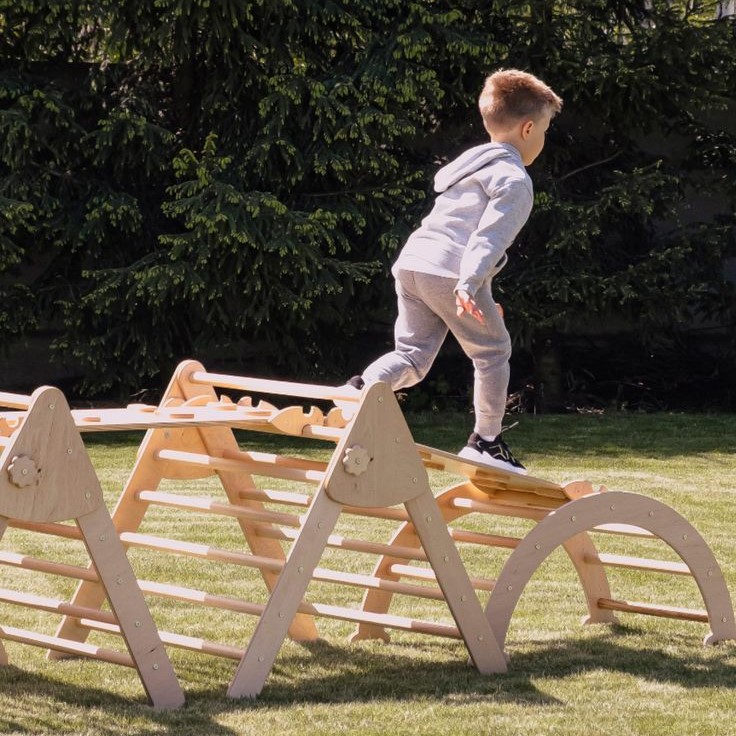
Creating Simple Sensory Play Areas
Sensory play areas engage children’s senses and enhance their exploration skills. Use natural elements for an authentic Montessori experience.
- Sand and Water Tables: Use bins or trays filled with sand, water, or mud. These let kids explore textures and practice scooping and pouring.
- Rock Gardens: Collect rocks with different shapes and sizes for sorting, stacking, and texture exploration.
- Natural Sound Makers: Hang shells, wooden chimes, or bells from tree branches to create soothing sounds.
- Plant Patches: Dedicate a small area for children to touch, smell, and care for plants or herbs.
- Tactile Pathways: Add stepping stones, pebbles, or wooden planks to encourage movement and foot sensory stimulation.
These DIY projects are easy to assemble and provide endless hours of engaging play.
Building Outdoor Tools and Crafts
Creating outdoor tools and crafts integrates problem-solving and practical skills into play. It also fosters independence and responsibility.
- Miniature Gardening Sets: Use old kitchen utensils to create child-sized spades, scoops, and rakes for planting activities.
- Homemade Kites: Craft kites using paper, sticks, and string. Flying them promotes patience and coordination.
- Nature Weaving Frames: Build simple wooden frames for kids to weave leaves, flowers, and grass.
- Wooden Balancing Boards: Sand and polish wooden planks to create a safe balance practice tool.
- DIY Obstacle Courses: Use ropes, logs, and tires to create fun and challenging physical activities.
By crafting these tools, children learn resourcefulness and responsibility while enjoying outdoor play.
Shopping Tips
Factors to Consider When Choosing Toys
Choosing the right Montessori outdoor toys is vital for a child’s development. Here are key factors to keep in mind:
- Age-Appropriateness: Select toys suitable for the child’s developmental stage. Avoid overly complex toys for toddlers.
- Material Quality: Prioritize natural, durable, and eco-friendly materials like wood or metal.
- Safety Features: Ensure toys have smooth edges, non-toxic finishes, and sturdy construction to prevent accidents.
- Learning Value: Opt for toys that encourage creativity, problem-solving, and meaningful play experiences.
- Ease of Maintenance: Choose toys that are easy to clean and resistant to outdoor elements.
- Sustainability: Look for toys made from renewable resources or biodegradable materials.
Selecting toys thoughtfully ensures both fun and developmental benefits for children.
Recommended Brands for Durable and Safe Options
When purchasing Montessori outdoor toys, choosing reputable brands guarantees quality and safety. Here are some trusted options:
- PlanToys: Known for sustainable manufacturing and eco-friendly wooden toys.
- Melissa & Doug: Offers a wide range of outdoor play tools and creative activity sets.
- Hape: Specializes in durable toys made from natural materials and water-based paints.
- Green Toys: Focuses on recycled materials and eco-friendly designs.
- Montessori-n-More: Provides toys specifically crafted to follow Montessori principles.
- Wishbone Design Studio: Offers outdoor toys emphasizing environmental care, like balance bikes and wagons.
These brands align strongly with Montessori values, ensuring children learn while having fun outdoors.
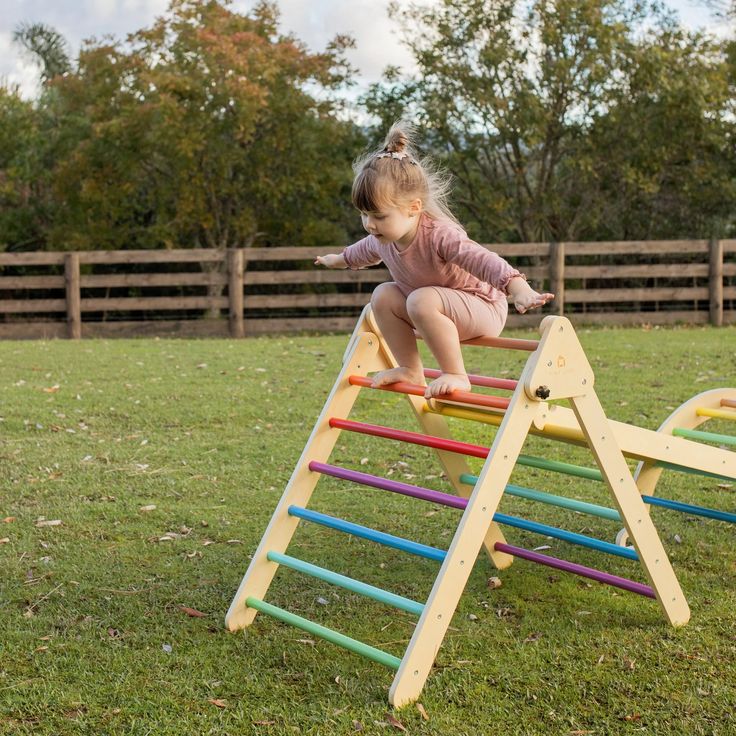
Encouraging Outdoor Exploration Beyond Toys
Outdoor exploration in Montessori education extends beyond toys. It enriches children’s understanding of their environment. Nature becomes an open classroom, offering opportunities for hands-on learning and connection.
Activities That Foster Nature Connection
Encouraging children to engage with nature fosters curiosity, creativity, and respect for the world.
- Nature Walks: Explore parks or trails to observe plants, animals, and ecosystems.
- Bird Watching: Use binoculars and books to identify local bird species while enhancing observation skills.
- Gardening: Allow children to plant seeds, water, and care for flowers or vegetables.
- Outdoor Art: Create crafts using leaves, sticks, and flowers collected during excursions.
- Rock and Shell Collecting: Identify textures, colors, and shapes to encourage tactile exploration.
- Weather Observation: Track the sun, clouds, and rain to understand natural patterns.
These activities nurture environmental stewardship and develop critical thinking in fun settings.
Developing a Montessori-Friendly Outdoor Space
Create a child-friendly outdoor area that aligns with Montessori principles. Aim for simplicity and function.
- Natural Play Elements: Include sand, water, and plants for sensory and imaginative play.
- Open Play Areas: Provide space for running, jumping, and larger physical activities.
- Quiet Zones: Add benches or areas for reading, reflection, or quiet time.
- Gardening Stations: Set up sections for planting and caring for vegetables or flowers.
- Outdoor Shelves: Keep tools, toys, and art supplies organized and easily accessible.
- Incorporate Local Features: Use trees, stones, or native plants for authenticity.
By designing an outdoor Montessori space, children discover and learn through structured freedom in nature.
Safety Considerations for Outdoor Play
Safe outdoor play is crucial for children’s well-being and development. By addressing safety concerns effectively, children can roam freely and enjoy play without risks.
Ensuring Safe Play Environments
A secure play environment supports worry-free exploration and physical activities. Here’s how to create such spaces:
- Inspect the Area: Check for hazards like sharp objects, uneven ground, or toxic plants.
- Use Safe Materials: Select non-toxic, durable, and eco-friendly materials for toys and play equipment.
- Adequate Supervision: Always supervise children, especially in areas with water or climbing structures.
- Provide Shade: Protect children from harmful sun exposure with shaded areas or sunscreen.
- Designate Play Zones: Separate active play areas from quiet zones to reduce accidents.
- Maintain Equipment: Regularly inspect and repair outdoor toys and structures to avoid injuries.
By designing a safe environment, children can focus on exploring and learning without unnecessary risks.
Age-Appropriate Safety Measures
Different age groups require tailored safety measures that align with their skills and needs:
- Toddlers: Use enclosed spaces and low-height play structures for their limited abilities.
- Preschoolers: Emphasize stable equipment like balance boards and keep toys free of small choking parts.
- Older Children: Introduce complex toys like climbing sets but ensure protective gear for sports activities.
- Safety Gear: Equip children with helmets, gloves, or knee pads as needed for physical play.
- Easy Access: Store tools and toys at reachable heights to prevent climbing accidents.
- Clear Instructions: Teach kids proper toy usage and basic safety rules, like waiting their turn.
Age-specific safety measures foster independence while minimizing risks during outdoor play.
Promoting safe play, combined with Montessori principles, ensures children grow and learn confidently outdoors.
Final Thoughts
Montessori outdoor toys are more than just playthings—they are powerful tools for learning and development. As we’ve explored, these toys support physical, cognitive, and emotional growth by encouraging exploration, creativity, and independence.
Whether your child is climbing, digging, or simply observing nature, Montessori outdoor toys provide a rich and engaging learning environment. They help children connect with the world around them in a meaningful way, fostering a love of learning and a deep appreciation for nature.
With the right approach and mindset, Montessori outdoor toys can become a valuable part of your child’s daily routine. They offer a unique blend of fun and education that supports long-term development and lifelong learning.
As the importance of outdoor play continues to grow, Montessori outdoor toys remain a top choice for parents and educators who want to nurture curious, confident, and capable children.
In conclusion, Montessori outdoor toys are a smart and effective investment in your child’s future. So why wait? Start exploring the world of Montessori outdoor play today and watch your child grow in amazing ways.
